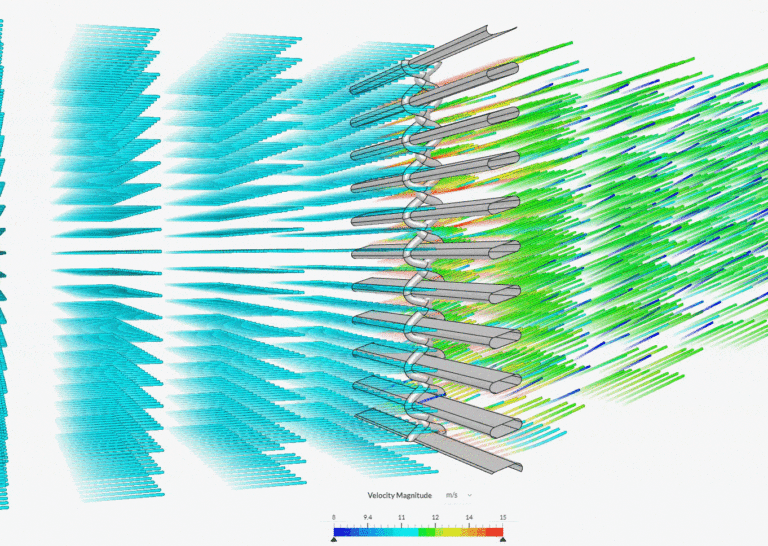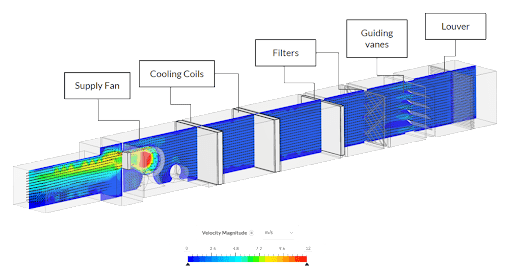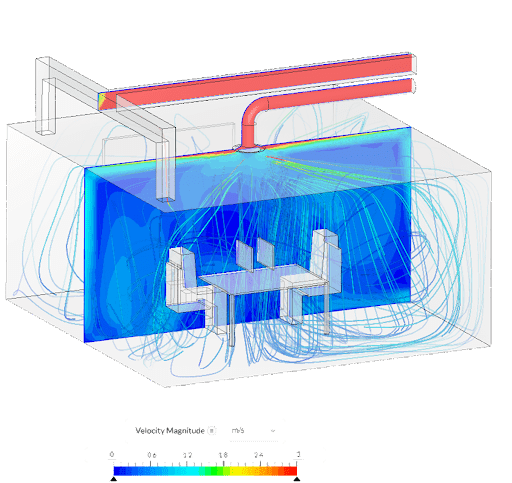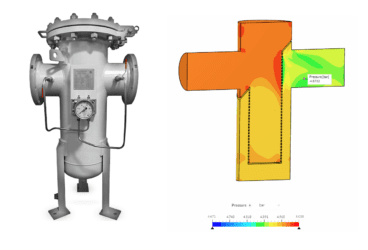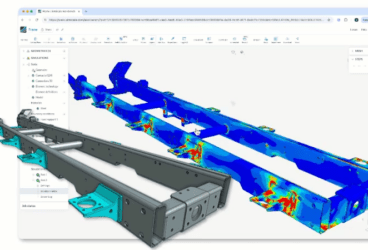With the growing importance of sustainable living environments, it is essential to make sure the products we use for ventilation are efficient as well. To design and create heating, ventilation, and air conditioning (HVAC) components with higher performance, analyzing them for aerodynamic and pressure-flow characteristics is critical. Most types of ventilation systems need to be designed to have maximum airflow through them while reducing the pressure losses across the unit. While assessing the efficiency of the designed equipment, different parameters such as blade or fin angle on a diffuser come into play. One of the most robust tools for manufacturers, suppliers, and engineers to optimize airflow performance is to perform computational fluid dynamics (CFD) simulations in the cloud.
Cloud-Native CFD Simulation and SmartLouvre
The first approach to optimize the design is to focus on the individual components of the unit by conducting a componential level analysis, in which the pressure drop through the dampers, grills, air filters, and louvres is examined. With the power of the CFD simulations being run fast and easily on the cloud, airflow around the individual components can be assessed, and how these individual HVAC components are affecting the aerodynamics within the unit can be understood with the help of the visualizations obtained via post-processing.
One such componential level analysis was performed by Smartlouvre to investigate the performance characteristics of a microfiber louvre design. Louvres are commonly attached to external windows to enhance the glazing and shading quality. SimScale was used to evaluate the pressure-flow characteristics of the MicroLouvre to determine an appropriate discharge coefficient (Cd).
The Cd value is a key property used in almost all building simulation tools to model the airflow in and out of building openings. This functional device was analyzed using simulations that replicated the wind tunnel set up at various wind speeds and angles. The result is a Cd value of 0.39, which can be inputted directly into any thermal modeling software such as IES, TaS, and DesignBuilder for simulating the airflow through a MicroLouvre Screen.
Watch our on-demand webinar where we explore how Smartlouvre used experimental data on the airflow, solar, thermal, and structural properties of MicroLouvre to simulate the overall performance of their unique MicroLouvre product for a low energy building design.
Simulation: From HVAC Component to Spatial Level Analysis
The second approach is to extend the focus within the design and analyze the whole HVAC unit, such as air handling, air conditioning, and diffuser units. By using SimScale’s CFD solution, the performance of the whole HVAC unit can be accurately predicted. Based on the aerodynamic quality within these units it can be assessed whether the design needs to be optimized further, to maximize the performance. Such design iterations might take days of work and a significant amount of cost if these analyses are done via physical testing. But by leveraging cloud-native CFD simulation, engineers can take advantage of virtual testing which can be completed much faster, more cost-efficiently, and are far more scalable in terms of design variations.
After assessing the performance of the individual parts and also the whole unit, the last approach would be to conduct a spatial level analysis to decide on the sizing of the unit, its position within the considered space, and the number of units to be placed within the space. These factors are determined based on the thermal comfort of occupants. By using the power of numerical simulations, multiple scenarios can be analyzed, investigating the performance of an HVAC unit when installed in different ways. The performance of the ventilation unit within the considered space can be enhanced by not only considering the airflow through the unit but also by assessing whether the thermal environmental conditions are accepted by the majority of the occupants.
In addition to enabling a cost-effective approach for testing HVAC equipment, from the component level all the way through spatial level analysis, simulations can provide extensive insights on the individual components which might be tedious for the sensor-based experimental approach. This, in turn, provides a better understanding of ventilation equipment and helps engineers and designers make design decisions accurately for an improved thermal experience and increased energy efficiency.
In our on-demand webinar with ASHRAE, our simulation experts show you how to get started with analysis types such as CFD and thermal simulation, using multiple case studies.
Explore even more resources from SimScale on testing, validating, and optimizing your HVAC designs through CFD, heat transfer, and thermal analysis:
- Using Ventilation Simulation to Increase the Performance of HVAC Systems
- Monodraught Develops Sustainable HVAC Products With CFD-Led Design Process
- Increasing Ventilation Performance of HVAC Units With SimScale
